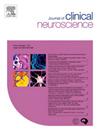康复阶段脑卒中后抑郁的症状测量:一种新的简短表格的开发和验证
IF 1.8
4区 医学
Q3 CLINICAL NEUROLOGY
引用次数: 0
摘要
脑卒中后抑郁康复阶段症状测量(SMPSD-RS)是一种专门用于检测急性脑卒中患者早期抑郁症状的测量工具,但在繁忙的临床环境中使用过于冗长。本研究旨在通过统计方法开发一个缩短的测试版本,以减轻评估负担并验证其有效性。方法从2024年3月至2024年5月,对445例脑卒中后患者进行人口统计调查和SMPSD-RS问卷调查。项目缩减过程主要包括项目反应理论(IRT)、项目分析、探索性因素分析和验证性因素分析。结果经项目缩减后,问卷缩减为12个项目,具有良好的结构效度和内部信度。三个因素被提取出来,占了大部分的总方差:“认知”,“睡眠”和“情感”。验证性模型拟合指标的估计值均符合标准准则。12个项目的标准化因子负荷符合标准标准,项目解释的方差是可以接受的。此外,12项问卷的内部信度估计是可以接受的,修正后的项目-总相关和项目-子量表相关问卷支持简短问卷的信度。结论《脑卒中后康复期抑郁症状测量简表》(SMPSD-RSSF)对筛查脑卒中后康复患者抑郁症状具有良好的信度和效度,可用于繁忙的临床环境。本文章由计算机程序翻译,如有差异,请以英文原文为准。
Symptom measurement of post‐stroke depression at rehabilitation stage: Development and validation of a new short form
Background
The Symptom Measurement of Post-Stroke Depression in the Rehabilitation Stage (SMPSD-RS) is a specialized measurement tool designed to detect early depressive symptoms in acute stroke patients, but it is too lengthy for use in busy clinical settings. This study aims to develop a shortened test version through statistical methods to reduce the assessment burden and validate its effectiveness.
Methods
During the three months from March 2024 to May 2024, 445 post-stroke patients completed two questionnaires: a demographic survey and the SMPSD-RS questionnaire. The item reduction process primarily involves item response theory (IRT), item analysis, exploratory factor analysis, and confirmatory factor analysis.
Result
The item reduction process results in a shortened 12-item questionnaire, demonstrating acceptable structural validity and internal reliability. Three factors are extracted, accounting for most of the total variance: “Cognition,” “Sleep,” and “Emotion.” All estimates of the confirmatory model fit indices meet the standard criteria. The standardized factor loadings for the 12 items meet the standard criteria, and the variance explained by the items is acceptable. Additionally, the internal reliability estimates for the 12-item questionnaire are acceptable, with corrected item-total correlations and item-subscale correlations questionnaire supporting the short-form questionnaire’s reliability.
Conclusion
The Symptom Measurement of Post-Stroke Depression in the Rehabilitation Stage Short Form (SMPSD-RSSF) demonstrates acceptable reliability and validity for screening depressive symptoms in post-stroke rehabilitation patients Which is useful to be used in a busy clinical setting.
求助全文
通过发布文献求助,成功后即可免费获取论文全文。
去求助
来源期刊

Journal of Clinical Neuroscience
医学-临床神经学
CiteScore
4.50
自引率
0.00%
发文量
402
审稿时长
40 days
期刊介绍:
This International journal, Journal of Clinical Neuroscience, publishes articles on clinical neurosurgery and neurology and the related neurosciences such as neuro-pathology, neuro-radiology, neuro-ophthalmology and neuro-physiology.
The journal has a broad International perspective, and emphasises the advances occurring in Asia, the Pacific Rim region, Europe and North America. The Journal acts as a focus for publication of major clinical and laboratory research, as well as publishing solicited manuscripts on specific subjects from experts, case reports and other information of interest to clinicians working in the clinical neurosciences.
 求助内容:
求助内容: 应助结果提醒方式:
应助结果提醒方式:


